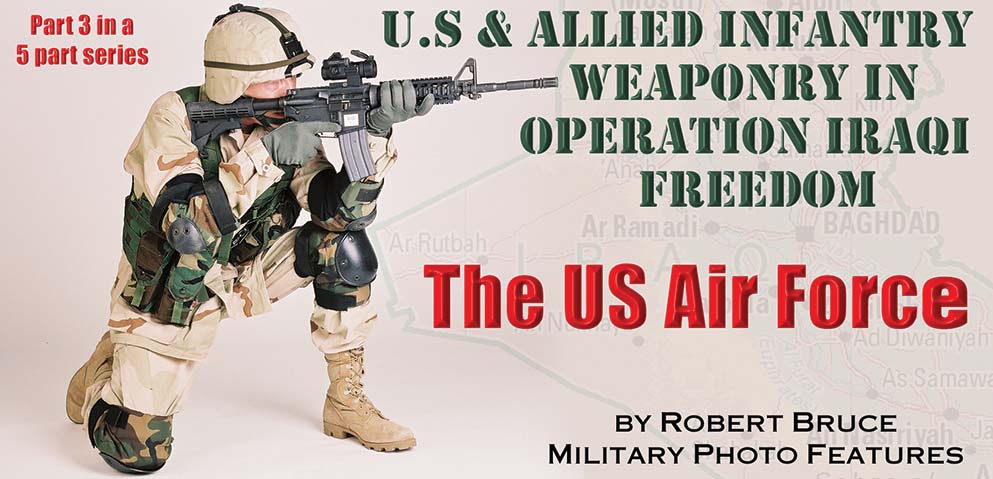
By Robert Bruce
While the Army and Marines have aircraft of their own to provide tactical airlift, close air support and movement of supplies, the USAF does the heavy lifting that makes large-scale joint operations so successful.
From secure bases halfway around the world, to forward-deployed airstrips close to ongoing ground combat in Iraq and Afghanistan, America’s Air Force is heavily committed to the War on Terror. Major components of this include strategic airlift of personnel, equipment and supplies, manned and unmanned reconnaissance, and “fast movers” that are on call by ground units to bomb and strafe as dictated by the immediate threat.
Most of the aircraft currently performing these diverse missions are well known veterans from the last two decades. The A-10 Warthog is still going strong, as are F15 fighters, B52 bombers, and C130 transports. These are joined in the skies over Central Command’s large area of operations by a catalog of others from tiny remote control spy ships to giant C5 cargo haulers.
A useful generality holds that the closer bases are to the combat zone, the more vulnerable they are to enemy action. Protection of these forward landholds is the job of USAF Expeditionary Security Forces, in many ways resembling a cross between mechanized infantry and urban SWAT teams.
These dedicated and well-armed men and women set up and enforce defensive perimeters intended to keep enemy intruders out so that the masses of technicians and other support personnel can safely go about their necessary duties. Inside the wire, they enforce access restrictions to sensitive areas and stay constantly on the alert for any indication of sabotage.
Since mortar rounds and rockets are not deterred by razor wire and electronic intrusion detectors, frequent patrols are also required far outside the relative safety of the base perimeter. Armored HMMWVs topped with machine guns are the vehicle of choice for these forays.
The Special Forces who man them are – in customary Air Force fashion – particularly well supplied with rifle-bullet-stopping body armor. Individual weapons include M16A2 rifles and M4 carbines that are often equipped with 40mm M203 grenade launchers, M249 Squad Automatic Weapons, and sniper rifles in 7.62mm and larger caliber.
Three other groups of Airmen are also of note for regularly being in the thick of things in ground combat. Pararescuemen ride Minigun-armed Blackhawk helicopters to retrieve downed pilots from hostile territory. Combat Controllers and Forward Air Controllers work elbow-to-elbow in the dirt with their Army and Marine comrades to ensure effective air/ground support.
More information on the US Air Force’s contributions can be found at www.af.mil
| This article first appeared in Small Arms Review V8N3 (December 2004) |










